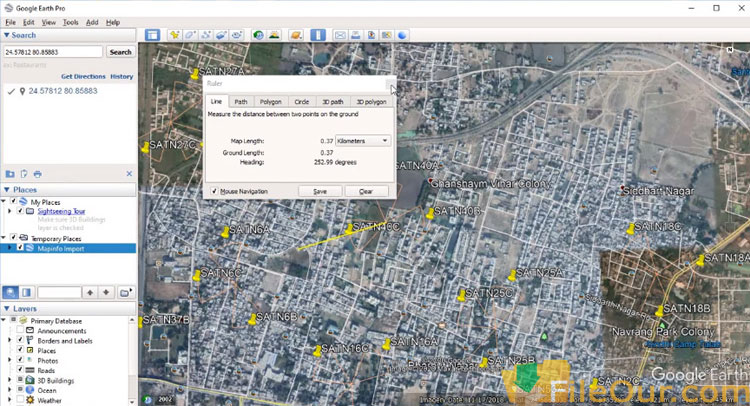

Near the bottom of the list, select “Show Elevation Profile” to open an inset window showing the cross-sectional profile (see figure below).
Show Elevation Profile: Select the name of the IBT Route from the “Places” window on the left (Example: the IBT route for the Central Arizona Project is named “CAP Route”), then “right-mouse-click” to open a popup menu with a list of options. For an IBT route, the graph would show the amount of variability in elevation along the route, and the slope from start to end (i.e., uphill or downhill). How do I view a Cross-Sectional Profile of an IBT Route in Earth Pro?Ī cross-sectional profile is a graph of the changes in elevation along a line from start to end. NOTE: Elevations in Google Earth are based on a DEM grid (approx., 30 m x 30 m in U.S., 90 m x 90 m non-U.S.) and should therefore be used with caution!. Mouse: The basic method for measuring elevation is to place the mouse pointer over the location of interest and read the elevation that appears in the lower right corner of the display screen (next to the Latitude and Longitude). 
The default setting “Clamped to Ground” is recommended. NOTE: Distances can vary based on “Altitude” settings in the Get Info window (In Google Earth, select Help on the main menu at top of display screen for more detail).At the bottom of the list, select “Get Info,” then select Measurements and choose the units for displaying the distance (Miles, Kilometers, etc.) or area (Square Miles, Square Kilometers, etc.). Get Info: Select an existing Path or Polygon from the “Places” window on the left, then “right-mouse-click” to open a popup menu with a list of options.

The distance and area of the feature will be displayed in the pop-up window. A pop-up window will give you the option to draw a Line between 2 points, a Path connecting multiple points, or a Polygon.
Ruler Tool: Select this tool from the toolbar at top of display screen. There are 2 basic options for measuring distance (and area) in Earth Pro: Ruler Tool or Get Info. How do I measure Distance and Area in Earth Pro? Select (left mouse click) a Folder or Feature to reveal a pop-up text box description. Select (left mouse click) the “check-box” to the left of a Folder or Individual Feature to turn its display ON or OFF.Ĥ. Select (left mouse click) the triangle-shaped bullet symbol to the left of a sub-folder title (Example: Pumping Plants) to reveal the individual features within the folder.ģ. This action will reveal the sub-folders that contain the individual features.Ģ. Select (left mouse click) the triangle-shaped bullet symbol to the left of the IBT title (Example: Central Arizona Project) to expand the main folder. How do I view the various features of the IBT map in Earth Pro?ġ. (Optional) In “Temporary Places” window on left panel, right-mouse-click on the file name, then Select pop-up window option “Save to My Places.” This action will keep the file in the My Places menu list for viewing next time you open Earth Pro. libgoogleearth_free.View Image of Central Arizona Project in Earth Pro 
googleearth/crashlogs/crashlog-50d60b60.txt The issue is discussed in more detail here: Version 7: Under OpenSuse 12.1 圆4 Please check your paths and filenames to match your system and versions. # ln -s /usr/X11R6/lib/fglrx/fglrx-libGL.so.1.2 /opt/google/earth/free/libGL.so.1 You need to symbolically link ATI's fglrx-libGL.so.1.2 to libGL.so.1 Googleearth-bin: error while loading shared libraries: libGL.so.1: cannot open shared object file: No such file or directory Google Earth locks/freezes the display Google Earth does not Start with ATI FGLRX Disable compositing (under System settings -> Desktop -> Desktop Effects -> General) and try again. Version 5.1 and 6: If google-earth rendering is garbled and/or extremely slow, this may very well be triggered by desktop compositing in conjunction with an nvidia card and driver.
#Google earth pro install drivers#
Panoramio photos not appearing when clicked Possible problem with nvidia drivers You replace the libcrypto.so.0.9.8 from Google Earth through a symbolic link to the native libcrypto.so.0.9.8.








 0 kommentar(er)
0 kommentar(er)
